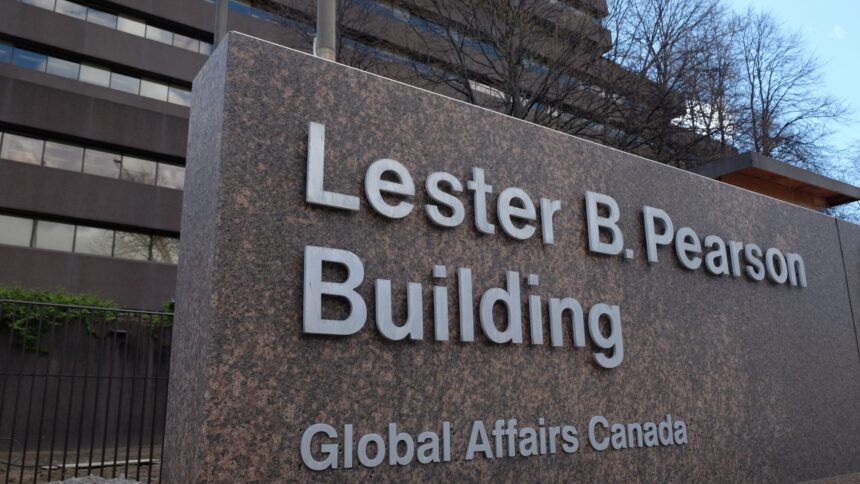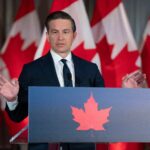The irony wasn’t lost on anyone at last week’s Ottawa diplomatic reception. As Finance Minister Carney outlined his vision for Canada’s “renewed global leadership,” career diplomats exchanged knowing glances across the room. Just days earlier, an internal memo had circulated confirming a 12% reduction to Global Affairs operational funding over the next three years.
“We’re being asked to project strength on the world stage while our diplomatic corps is literally being dismantled,” confided a 20-year foreign service veteran who requested anonymity. “It’s like announcing plans to win the Stanley Cup while trading away your best players.”
The contradiction highlights a growing tension within the Carney-led economic vision. Since taking office, Carney has positioned Canada as ready to reassert influence in international forums – from UN peacekeeping to trade negotiations with emerging Asian economies. Yet the latest budget figures tell a different story.
According to Treasury Board documents obtained through access to information requests, Canada’s diplomatic presence will shrink from 178 missions worldwide to approximately 160 by 2026. The cuts represent the most significant reduction to Canada’s foreign service footprint since the Harper-era consolidations.
Former Ambassador to China Guy Saint-Jacques calls the situation “deeply troubling” for Canada’s international standing. “Diplomacy isn’t something you can turn on and off like a tap,” he told me during a phone interview. “The relationships and intelligence networks our diplomats build take years to develop and can be lost in an instant.”
The effects are already visible in places like Southeast Asia, where Canada has struggled to gain traction in regional trade frameworks. While countries like Australia have increased their diplomatic presence in ASEAN nations by 23% since 2019, Canada has reduced staff at missions in Indonesia, Thailand, and Malaysia.
“We were notified last month that our trade commission in Kuala Lumpur would operate with skeleton staff,” said Maria Cheng, CEO of Canadian Clean Energy Exports, whose company has been seeking entry into Malaysia’s growing renewable sector. “There’s simply no one available to facilitate critical introductions or navigate local regulatory frameworks.”
The numbers tell a stark story. Canada now spends approximately 0.2% of its federal budget on diplomatic operations – less than half the OECD average. For comparison, Australia invests nearly triple per capita on foreign representation despite having a smaller economy.
At Parliament Hill, the opposition hasn’t missed the contradiction. Conservative foreign affairs critic Michael Chong pointed to the discrepancy during Question Period last Thursday, suggesting the government was “talking big but carrying a small stick” in international affairs. The NDP’s international development critic, Heather McPherson, warned that retreating from global engagement “leaves the most vulnerable behind.”
When pressed about the cuts, Carney’s office provided a written statement emphasizing “strategic realignment” rather than reduction. “We’re modernizing our approach to diplomacy through digital tools and regional hubs that maximize impact while respecting fiscal realities,” the statement read.
But for diplomats in the field, such corporate-speak doesn’t match reality. At Canada’s mission in Nairobi, which oversees relations with five East African nations, staffing has been reduced from 18 to 11 Canadian officers. “We’re stretched beyond capacity,” said a current mission employee. “Critical files like climate adaptation and food security programs simply don’t get the attention they deserve.”
The timing couldn’t be worse for Canada’s international ambitions. With mounting instability in the Middle East, a pivotal American election approaching, and climate negotiations entering a crucial phase, diplomatic bandwidth matters more than ever.
Former Foreign Affairs Minister Lloyd Axworthy, who oversaw Canada’s diplomatic golden era in the 1990s, believes the cuts reflect a fundamental misunderstanding of how influence works. “You can’t separate economic ambition from diplomatic capacity,” he said during an interview at his Winnipeg office. “The countries that lead on trade are the ones showing up consistently, building relationships, and maintaining presence even when immediate returns aren’t obvious.”
The cutbacks have particularly affected mid-career diplomats, with internal surveys showing record-low morale. Last month’s voluntary departure program saw 142 foreign service officers accept buyout packages – nearly triple the expected number.
“We’re losing institutional memory and cultural expertise that takes decades to build,” warned retired Ambassador Ferry de Kerckhove. “When you need Mandarin speakers who understand Chinese provincial politics or Arabic specialists who can navigate tribal dynamics in Syria, you can’t just hire them overnight.”
For communities across Canada, the diplomatic retreat has tangible consequences. Take Waterloo Region’s tech corridor, where companies like quantum computing startup QuantumWorks depend on embassy support to access foreign markets. “Our German competitors arrive at trade shows with their ambassador in tow,” notes CEO Samantha Krishnan. “Meanwhile, we’re often on our own because there simply aren’t enough Canadian trade commissioners to go around.”
Immigration processing has also suffered. With fewer consular officers at missions abroad, processing times for certain visa categories have increased by 30% since last year, according to Immigration Department statistics.
The cuts represent a striking departure from the approach of like-minded countries. The UK recently announced a 15% increase to its Foreign Office budget despite broader fiscal challenges. Australia has opened seven new missions across the Indo-Pacific since 2020. Even smaller players like Norway maintain proportionally larger diplomatic networks.
For now, Canada’s diplomatic corps continues doing more with less – a Canadian tradition some might say. At last week’s reception, as servers circulated with significantly fewer canapés than previous years (another budget cut), one could overhear veteran diplomats sharing gallows humor about “ghost missions” staffed by a single overworked officer.
When I asked a recently retired ambassador whether Canada’s global influence could survive the current trajectory, she paused before responding: “Diplomacy is ultimately about showing up. You can have the most brilliant policy ideas, but if you’re not in the room, you don’t matter.”
For a finance minister with ambitious plans for Canada’s economic renaissance through global engagement, that warning should prompt serious reflection. Because in international relations, as in hockey, you can’t expect to win championships while systematically weakening your team.






